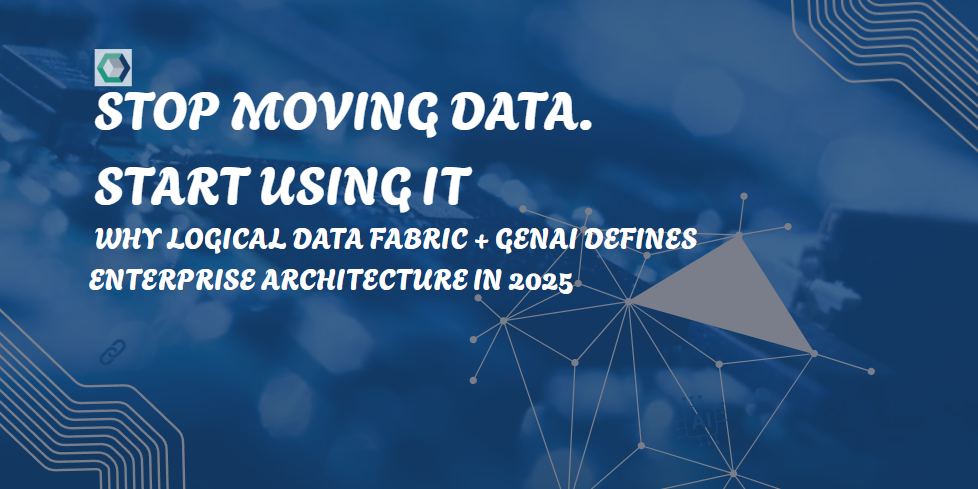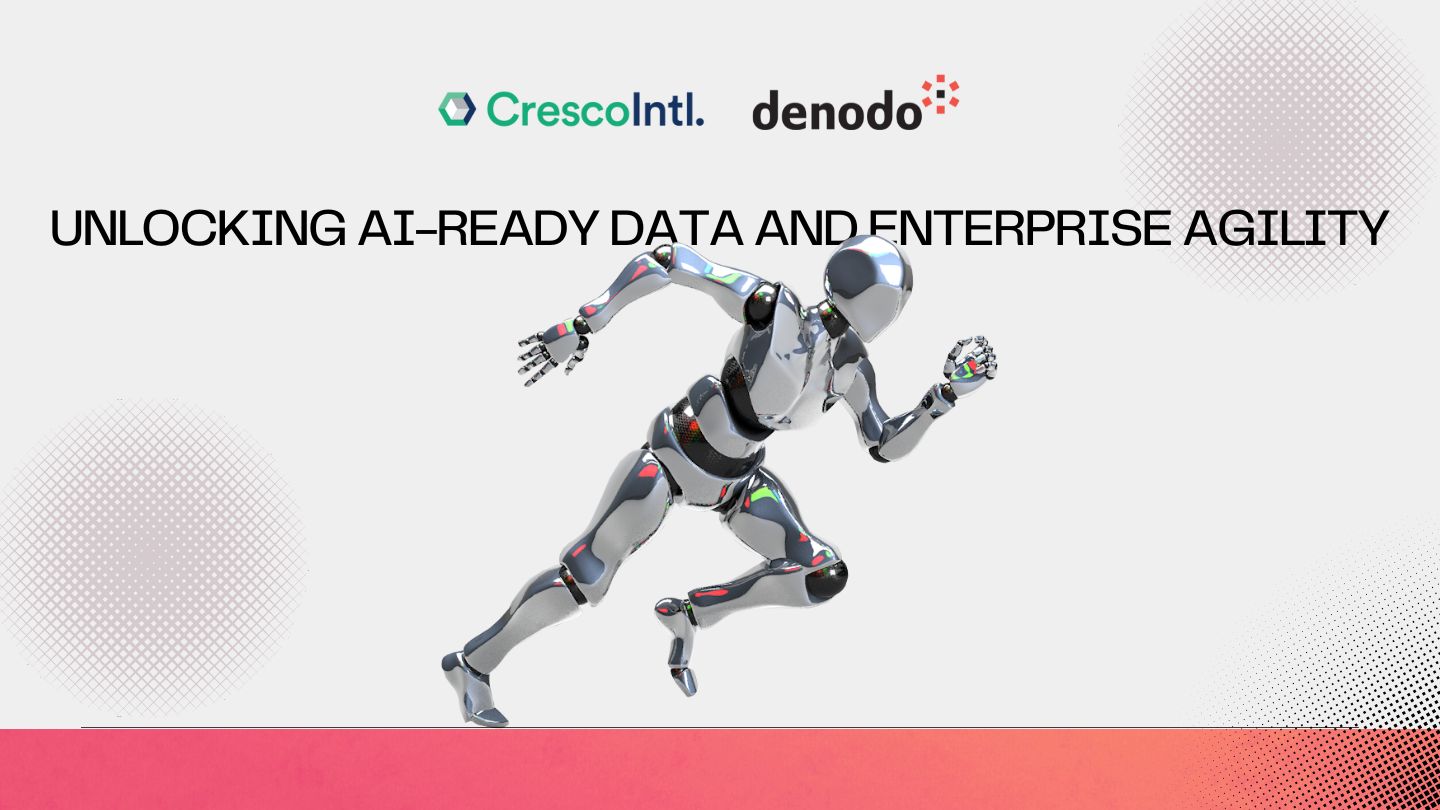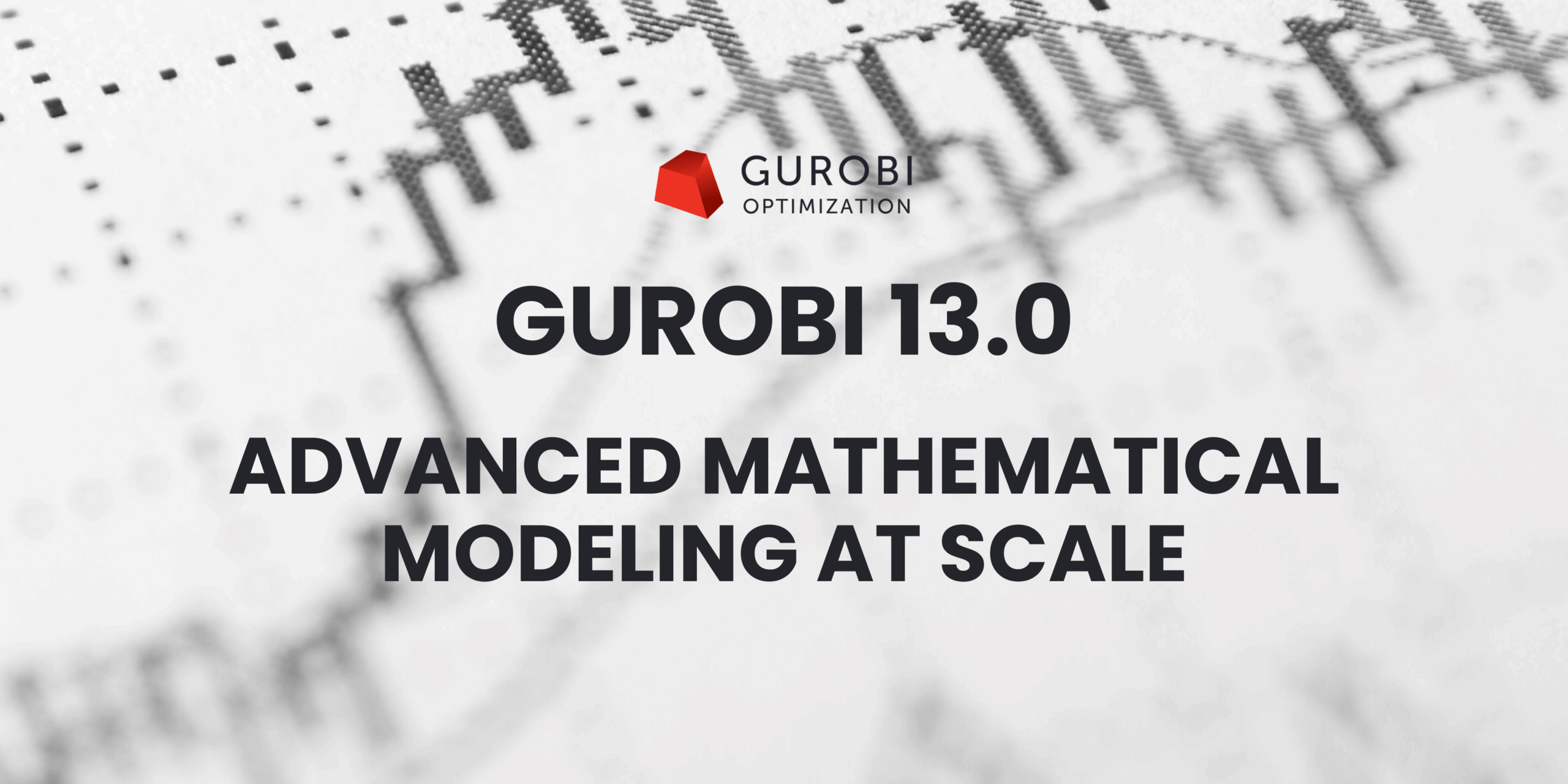Mathematical optimization is a powerful tool for solving complex problems across numerous industries, from supply chain management to finance and beyond. Among the leading solvers in this domain are Gurobi and CPLEX, two robust and widely-used optimization engines. However, circumstances may arise where organizations or individuals need to transition from one solver to the other. Perhaps your company has changed its licensing agreements, or you require specific features unique to CPLEX. Regardless of the reason, the migration process can seem daunting, especially for those deeply entrenched in the Gurobi ecosystem. Fear not! This comprehensive guide will walk you through every step of the migration process, ensuring a smooth and successful transition to CPLEX.
Understanding the Differences between Gurobi and CPLEX
Before embarking on the migration journey, it’s crucial to understand the fundamental differences between Gurobi and CPLEX. While both solvers share many similarities in terms of functionality and capabilities, there are distinct variations in syntax, parameter settings, and specific features that can impact your optimization models and workflows. One of the key differences lies in the modeling environments and programming languages supported by each solver. Gurobi offers interfaces for various languages, including Python, C++, Java, C#, MATLAB, and R, while CPLEX provides modeling environments such as the Concert Technology for C++, Python, and Java, as well as the algebraic modeling language OPL (Optimization Programming Language). Depending on your familiarity and project requirements, you may need to adapt your existing code or learn a new modeling environment when migrating to CPLEX. Another significant distinction is the range of modeling constructs and capabilities offered by each solver. While both Gurobi and CPLEX support linear, mixed-integer, and quadratic programming problems, CPLEX offers additional features that may not have direct equivalents in Gurobi. These include indicator constraints, semi-continuous variables, and advanced quadratic constraints. Understanding and leveraging these features can unlock new modeling possibilities and enhance the accuracy and efficiency of your optimization models. Furthermore, Gurobi and CPLEX may differ in their approach to certain optimization techniques, such as presolve routines, cut generation strategies, and heuristic methods. These differences can impact the performance and solution quality of your models, making it essential to understand and adapt your solver settings accordingly.
Preparing for the Migration
Before diving into the migration process, it’s essential to take a few preparatory steps to ensure a smooth transition. First and foremost, ensure that you have the appropriate licenses and permissions to use CPLEX within your organization. Licensing models and costs may differ from Gurobi, so it’s crucial to review and comply with CPLEX’s licensing terms. Next, familiarize yourself with the CPLEX documentation and support resources. CPLEX offers extensive user guides, reference manuals, and online resources that can be invaluable when encountering issues or seeking guidance on advanced features. Investing time in understanding these resources can significantly accelerate your learning curve and facilitate a more seamless migration. If your optimization models are integrated with other systems or applications, you’ll need to plan for potential changes in interfaces, data formats, and deployment processes to accommodate the new solver. Identifying and addressing these integration points early on can prevent downstream issues and ensure a smoother transition. Finally, consider setting up a dedicated test environment where you can experiment with CPLEX and validate your migrated models before deploying them to production systems. This environment can serve as a sandbox for learning, testing, and benchmarking, minimizing the risk of disruptions to your critical operations.
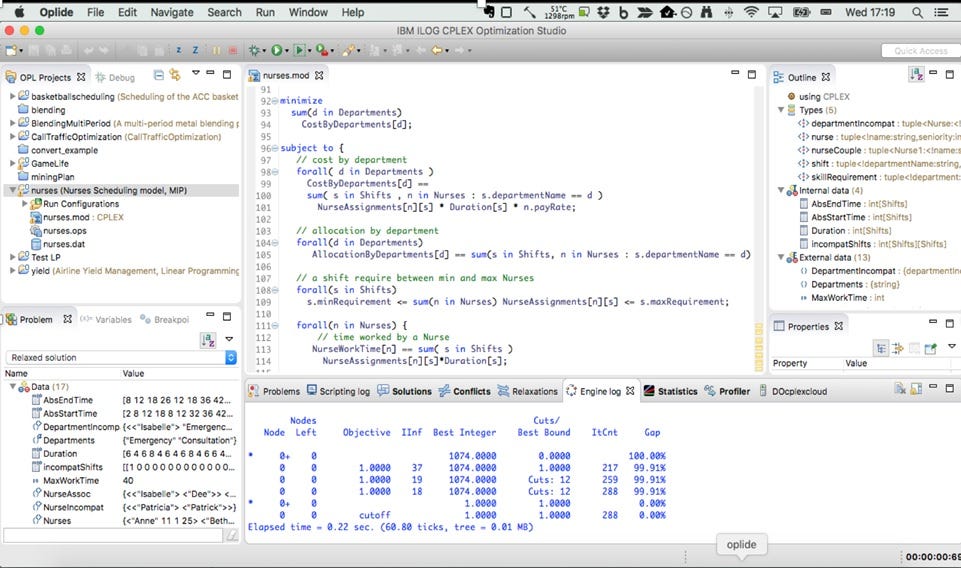
Essential Preparatory Steps for the Migration
Before diving into the technical details, it’s crucial to lay the groundwork for a successful migration. This section will cover the essential preparatory steps.
- Licensing and Installation Ensure that you have the appropriate licenses and installations for CPLEX. The licensing models and installation processes may differ significantly from Gurobi. Familiarize yourself with the CPLEX licensing options (academic, commercial, cloud-based, etc.) and choose the one that best suits your needs. Follow the official CPLEX installation guides and documentation to set up the solver on your systems.
- Code Inventory and Mapping Conduct a thorough inventory of your existing Gurobi-based codebase, identifying all the components that interact with the solver (model building, parameter setting, solving, and solution extraction). Create a mapping between the Gurobi constructs (e.g., variables, constraints, parameters) and their CPLEX counterparts to streamline the migration process.
- Testing Framework Establish a robust testing framework to validate the correctness of your migrated code. This may involve creating a suite of test cases, ranging from simple models to complex, real-world scenarios. Ensure that your testing framework captures edge cases, corner cases, and specialized features that your models rely on.
- Performance Benchmarking If performance is a critical factor for your applications, set up a benchmarking process to compare the solver performance (e.g., solution times, memory usage) between Gurobi and CPLEX. Identify a representative set of models and problem instances to use as benchmarks, spanning a wide range of complexities and sizes.
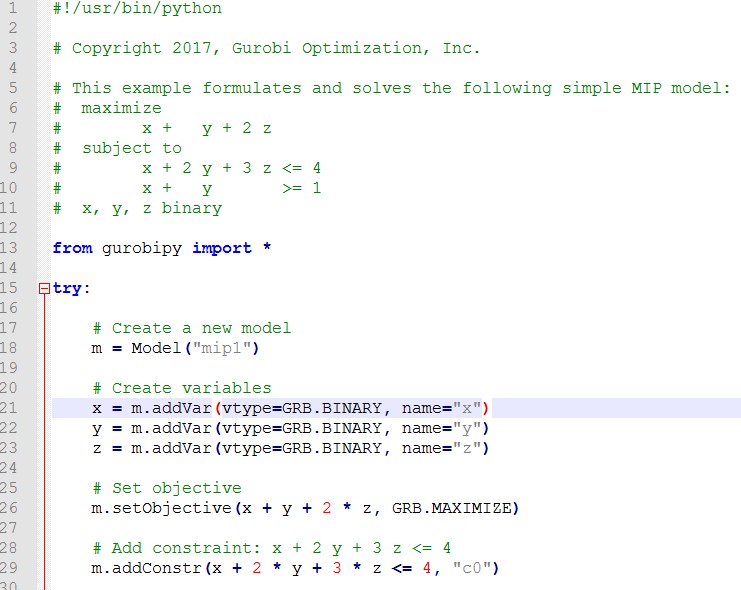
Building the Model
The model-building process is one of the most significant areas where Gurobi and CPLEX differ. This section will guide you through the intricacies of translating your Gurobi models to CPLEX.
- Variable Creation: In Gurobi, variables are created using an object-oriented approach with the addVar method. CPLEX, on the other hand, follows a more procedural style, requiring you to work with arrays and indices. Learn how to create arrays for variable types, bounds, and objective coefficients in CPLEX, and then use the newcols function (for example .binary_var_matrix) to create the variables. Understand the nuances of handling different variable types (continuous, binary, integer) and variable bounds in CPLEX.
- Constraint Creation: Similar to variable creation, constraints in Gurobi are created using the addConstr method, specifying the constraint expression and sense (<=, >=, or ==). In CPLEX, you’ll need to create arrays for the constraint matrices (the non-zero coefficients and their row/column indices), and then use the newrows function (for example .add_constraint) to create the constraints. Learn how to handle different constraint types (linear, quadratic, second-order cone, etc.) in CPLEX, as the process may vary.
- Quadratic and Nonlinear Modeling: If your models include quadratic or nonlinear terms, the process for defining them differs significantly between Gurobi and CPLEX. In Gurobi, you can use the addQConstr and setObjective methods with quadratic expressions, as well as specialized functions for nonlinear terms. In CPLEX, you’ll need to provide separate arrays for the linear and quadratic coefficients, as well as specific functions for handling nonlinear terms. Master the techniques for constructing quadratic and nonlinear models in CPLEX, including the use of callback functions and user-defined constraints.
- Model Updates and Modifications: In Gurobi, you can update the model by modifying the existing variables and constraints directly. CPLEX, however, requires you to delete and recreate the affected components using functions like delcols, delrows, newcols, and newrows. Learn the best practices for managing model updates and modifications in CPLEX, ensuring efficiency and minimizing the risk of introducing errors.
- Advanced Modeling Techniques: Both Gurobi and CPLEX offer a wide range of advanced modeling techniques, such as column generation and Benders decomposition. Understand the differences in how these techniques are implemented in each solver, and learn how to migrate your existing implementations to CPLEX.
Setting Solver Parameters
Proper parameter tuning can significantly impact solver performance and behavior. This section will guide you through the process of translating your Gurobi parameter settings to CPLEX.
- Parameter Naming Conventions: Gurobi parameters typically follow a hierarchical naming scheme (e.g., Threads, Presolve), while CPLEX parameters are often prefixed with “CPX_PARAM_” (e.g., CPX_PARAM_THREADS). Create a comprehensive mapping between the Gurobi and CPLEX parameter names to facilitate the migration process.
- Parameter Setting and Validation: In Gurobi, you would set parameters using the setParam method on the model or environment object. CPLEX requires you to use the setparam function, specifying the parameter name and value. Implement a robust parameter validation process to ensure that your migrated parameter settings are valid and consistent with CPLEX’s expectations.
- Parameter Value Translations: While many parameters share similar concepts across solvers, the specific parameter values may differ. Carefully study the CPLEX parameter documentation to understand the value mappings and semantics for each parameter you plan to migrate. Develop a systematic approach for translating parameter values from Gurobi to CPLEX, accounting for differences in scaling, units, or interpretations.
- Solver Strategies and Algorithms: Both Gurobi and CPLEX offer a wide range of solver strategies and algorithms (e.g., node selection strategies, cut generation, heuristics) that can be controlled through parameters. Evaluate the capabilities and strengths of each solver’s strategies and algorithms, and adjust your parameter settings accordingly to leverage the strengths of CPLEX.
- Parameter Tuning and Experimentation: While migrating your existing parameter settings is a good starting point, you may need to experiment with different parameter combinations to achieve optimal performance with CPLEX. Leverage the benchmarking framework you established earlier to systematically evaluate the impact of different parameter settings on CPLEX’s performance. Consider using automated parameter tuning tools or techniques, such as those offered by CPLEX’s Parameter Tuning Tool.
Need CPLEX Training? Enroll for
Computing and Extracting the Solution
Once you’ve successfully migrated your model and parameter settings, it’s time to focus on solving the problem and retrieving the solution.
- Solving the Model: In Gurobi, you would call the optimize method on the model object to solve the problem. CPLEX requires you to use the .solve method, passing the appropriate solver control parameters (e.g., time limit, solution pool settings, parallelism options). Understand the different solver control parameters available in CPLEX and their impact on the solution process.
- Solution Status and Diagnostics: After solving, both solvers provide information about the solution status (optimal, infeasible, unbounded, etc.) and diagnostic information. In Gurobi, you would check the Status property of the model object, while in CPLEX, you’ll need to use, the cplex.getStatus function and check the status code. Learn how to interpret the different solution status codes and diagnostic information provided by CPLEX, as they may differ from Gurobi’s conventions.
- Retrieving Variable Values: To obtain the values of the decision variables in the solution, Gurobi provides the getAttr method on the variable objects. In CPLEX, you’ll need to use the cplex. getValues function, specifying the desired solution information (e.g., variable values, reduced costs, slacks). Understand the various solution information types available in CPLEX and how to extract them correctly, accounting for differences in indexing and data structures.
- Dual Values and Sensitivity Analysis: Both solvers provide access to dual values (shadow prices) and sensitivity information (e.g., objective ranges, allowable variable ranges). In Gurobi, you would use the getAttr method on the constraint objects and the computeIIS method for analyzing infeasible or unbounded solutions. CPLEX requires you to call functions like cpxgetdj, cpxgetpi, and CPXgetsolnpoolx to retrieve this information. Master the techniques for extracting and interpreting dual values and sensitivity information in CPLEX, ensuring consistency with your existing Gurobi-based workflows.
- Accessing the Basis and Advanced Solution Information: If your application requires access to the final basis (the set of non-basic variables that define the solution), Gurobi provides the CBasis object, while in CPLEX, you’ll need to use the Cplex.GetBasisStatus method. Learn how to navigate the CPLEX solution pool and retrieve advanced solution information, such as alternative optimal solutions, incumbents, and node logs.
- Solution Postprocessing and Integration: Develop strategies for seamlessly integrating the CPLEX solution into your existing postprocessing workflows, such as reporting, visualization, or decision-making pipelines. Ensure that the solution data structures and formats are compatible with your downstream processes, and implement any necessary data transformations or conversions.
Advanced Topics and Considerations
This section covers additional advanced topics and considerations that may arise during the migration process.
- Solver Capabilities and Feature Comparisons: While Gurobi and CPLEX share many similarities, there may be specific capabilities or features that one solver excels at over the other. Conduct a thorough feature comparison between the two solvers, identifying areas where CPLEX may offer additional functionality or superior performance. Leverage these unique CPLEX capabilities to enhance your optimization workflows and explore new possibilities for your applications.
- Parallel and Distributed Optimization: Both Gurobi and CPLEX support parallel and distributed optimization techniques, allowing you to harness the power of multiple processors or computing nodes. Understand the differences in how parallelism is implemented and controlled in each solver, and migrate your existing parallel computing strategies to CPLEX. Explore CPLEX’s advanced parallel and distributed optimization capabilities, such as remote object support and deterministic parallel mode.
- Callback Functions and User-Defined Routines: If your Gurobi-based applications rely on callback functions or user-defined routines (e.g., custom heuristics, cut generators, or lazy constraints), you’ll need to migrate these components to the CPLEX ecosystem. Familiarize yourself with the CPLEX callback and user-defined routine interfaces, as they may differ from Gurobi’s conventions. Implement a robust testing and validation strategy to ensure the correctness and performance of your migrated callback functions and user-defined routines.
- Integration with Modeling Languages and Frameworks: If you’re using algebraic modeling languages (e.g., AMPL, GAMS) or optimization modeling frameworks (e.g., PuLP, Pyomo) with Gurobi, you’ll need to assess their compatibility with CPLEX. Understand the steps required to switch the underlying solver in these modeling tools, and ensure that your models and workflows are correctly translated to CPLEX.
Want to Buy CPLEX? Visit
Conclusion
Migrating from Gurobi to CPLEX is a complex and multifaceted undertaking, but by following the guidelines and best practices outlined in this comprehensive guide, you’ll be well-equipped to navigate the transition successfully. Remember, the key to a smooth migration lies in thorough preparation, meticulous attention to detail, and a willingness to embrace the unique strengths and capabilities of CPLEX. Throughout the process, remain patient and persistent, as there may be unforeseen challenges and hurdles to overcome. Leverage the extensive documentation, community support, and your testing and benchmarking frameworks to troubleshoot issues and optimize performance.
Ultimately, the effort invested in migrating to CPLEX will pay dividends in the form of enhanced optimization capabilities, improved performance, and the ability to tackle a wider range of complex problems. Imagine achieving faster, more accurate solutions to your most challenging optimization problems, all while enjoying the robust features and unparalleled support that CPLEX offers.
Embrace the journey towards superior optimization. Let Cresco International be your trusted companion as you unlock the full potential of mathematical optimization with CPLEX. With our expert guidance, your transition from Gurobi to CPLEX will be smooth and efficient, ensuring minimal disruption and maximum benefit.
Our team at Cresco International is dedicated to helping you leverage the power of CPLEX to its fullest, providing you with the tools, expertise, and support you need to succeed. Don’t let the fear of change hold you back from achieving your optimization goals.
Call Cresco International today and embark on the path to optimization excellence with CPLEX. Your journey to enhanced performance and capability begins now.




